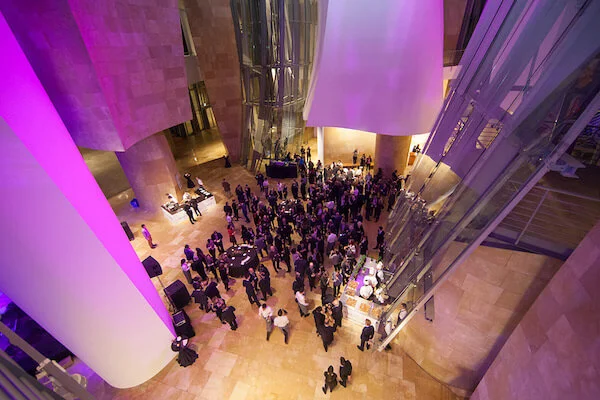Your Dream Vacation Awaits: Luxury Villas, Colonial Mansions and Houses in Cuba
Discover Cuba through elegance and exclusivity. Our collection of handpicked villas and mansions offers more than just a stay — it’s an immersion into the soul of the island. From beachfront estates to historic residences in Havana, each home is curated for discerning travelers seeking authenticity, privacy, and refined comfort. Welcome to LujoCuba — your gateway to a truly exceptional Cuban escape.
Discover Cuba through elegance and authenticity. Our handpicked villas and colonial mansions offer privacy, comfort, and design — blending world-class service with the island’s soulful charm. Begin your bespoke escape and experience the essence of Cuban luxury.
Browse our curated villas for rent in Cuba and begin designing your bespoke island escape — where privacy, elegance, and authenticity await.
Discover Cuba's Magic: Exclusive Tours and Experiences
Experience the soul of Cuba through our exclusive private tours and curated experiences. From Old Havana’s vibrant art scene to the serene valleys of Viñales, every itinerary is tailored for refined travelers. Savor local gastronomy, connect with Cuban artists, and explore the island’s timeless rhythm — entirely on your terms.
Led by expert guides with insider access, every journey is designed around you — whether you’re drawn to architecture, art, or hidden natural gems. Discover Cuba intimately, authentically, and entirely on your terms.
Why Choose Us?
RESPONSIVE TEAM
Our dedicated on-site staff is available 24/7 to ensure every detail of your stay is seamless.
HOSPITALITY
We proudly hold one of the highest client satisfaction rates in the luxury travel industry.
PASSION
Driven by genuine care and love for what we do, we’re committed to creating unforgettable experiences.
SUSTAINABILITY
We prioritize locally sourced and organic products to support Cuba’s communities and environment.
Each LujoCuba villa is a fully serviced sanctuary. Enjoy 24/7 security, discreet butler and concierge service, and daily housekeeping. From your arrival welcome to personalized dining experiences, every moment is designed for peace, comfort, and pleasure — the essence of effortless luxury in Cuba.
Start your journey with a personalized welcome ceremony that sets the tone for what’s to come. Impeccable daily housekeeping keeps your villa in pristine condition, while access to exclusive amenities and premium products ensures every detail exceeds expectations.
Security
Butler
In charge of coordinating and ensuring the highest level of comfort, satisfaction, and privacy for the guests.
Concierge
Housekeeping
Welcome Ceremony
Exclusive Products
Enhance your Cuban experience with our exclusive car rental and private chauffeur services.
Choose from classic American convertibles or modern luxury SUVs, and enjoy the freedom of exploring Havana and beyond with total comfort and discretion.
Our bilingual drivers ensure seamless airport transfers, city tours, and on-demand travel — crafted for guests who value elegance and privacy in motion.
Immerse yourself in Cuba’s vibrant nightlife, dance at exclusive venues, or relax in bespoke wellness retreats. Savor local gastronomy with our handpicked restaurant recommendations, or let us assist you in planning unforgettable moments — from elegant weddings to thrilling scuba diving adventures.
Enhance your stay with bespoke services — from private transfers and cultural excursions to fine dining, wellness, and event planning. Our team connects you to Havana’s finest chefs, artists, and experiences, ensuring that every moment of your Cuban journey is unforgettable.
Immerse yourself in Cuba’s vibrant nightlife, dance at exclusive venues, or relax in bespoke wellness retreats. Savor local gastronomy with our handpicked restaurant recommendations, or let us assist you in planning unforgettable moments — from elegant weddings to thrilling scuba diving adventures.
At LujoCuba, we handpick every property — from villas with pools to colonial homes — ensuring design excellence, comfort, and privacy. Whether you seek a beachfront estate in Miramar or a historic mansion in Vedado, we tailor your stay to reflect your lifestyle and expectations.
LujoCuba stands at the intersection of luxury, culture, and authenticity. Our mission is to redefine travel to Cuba through curated stays, local expertise, and impeccable service. From global entrepreneurs to cultural travelers, those who stay with us don’t just visit Cuba — they experience it with elegance and soul.
EXCLUSIVE CONCIERGE MEMBERSHIP
WITH YOUR BOOKING
What is a “Casa Particular” in Cuba?
Immerse yourself in the charm of casas particulares — Havana’s most authentic form of private accommodation.
Our curated selection includes homes featuring swimming pools, panoramic terraces, and colonial architecture, all enhanced by our signature hospitality.Enjoy the warmth of Cuban culture while preserving your privacy and comfort. Additional services provided by villa staff can be arranged directly during your stay, ensuring flexibility and intimacy.
What concierge services does LujoCuba offer?
Your comfort is our signature. Our bilingual concierge team offers full-time support to create a flawless, worry-free experience.
Our signature services include:
- Chauffeured airport transfers in high-end vehicles
- In-villa fine dining and private chef experiences
- VIP access to events, bars, and restaurants
- Personalized tours, private concerts, and salsa lessons
- Wellness: massage, yoga, and personal training
- Catamaran escapes and cultural excursions
Every moment is planned around your lifestyle — discreetly and flawlessly executed.
What unique experiences can I enjoy in Cuba?
Beyond the beaches, enjoy private concerts, art tours, salsa classes, fine dining in avant-garde restaurants, and curated excursions to Havana’s vibrant neighborhoods.
Does LujoCuba assist business travelers in Cuba?
Yes. We provide legal and logistical consulting, arrange meetings, and connect executives with trusted local partners — combining productivity with Cuban charm.
Why choose LujoCuba for your stay?
100 % verified villas, 24/7 concierge, absolute privacy, privileged cultural access, and luxury hospitality designed for discerning travelers.





















